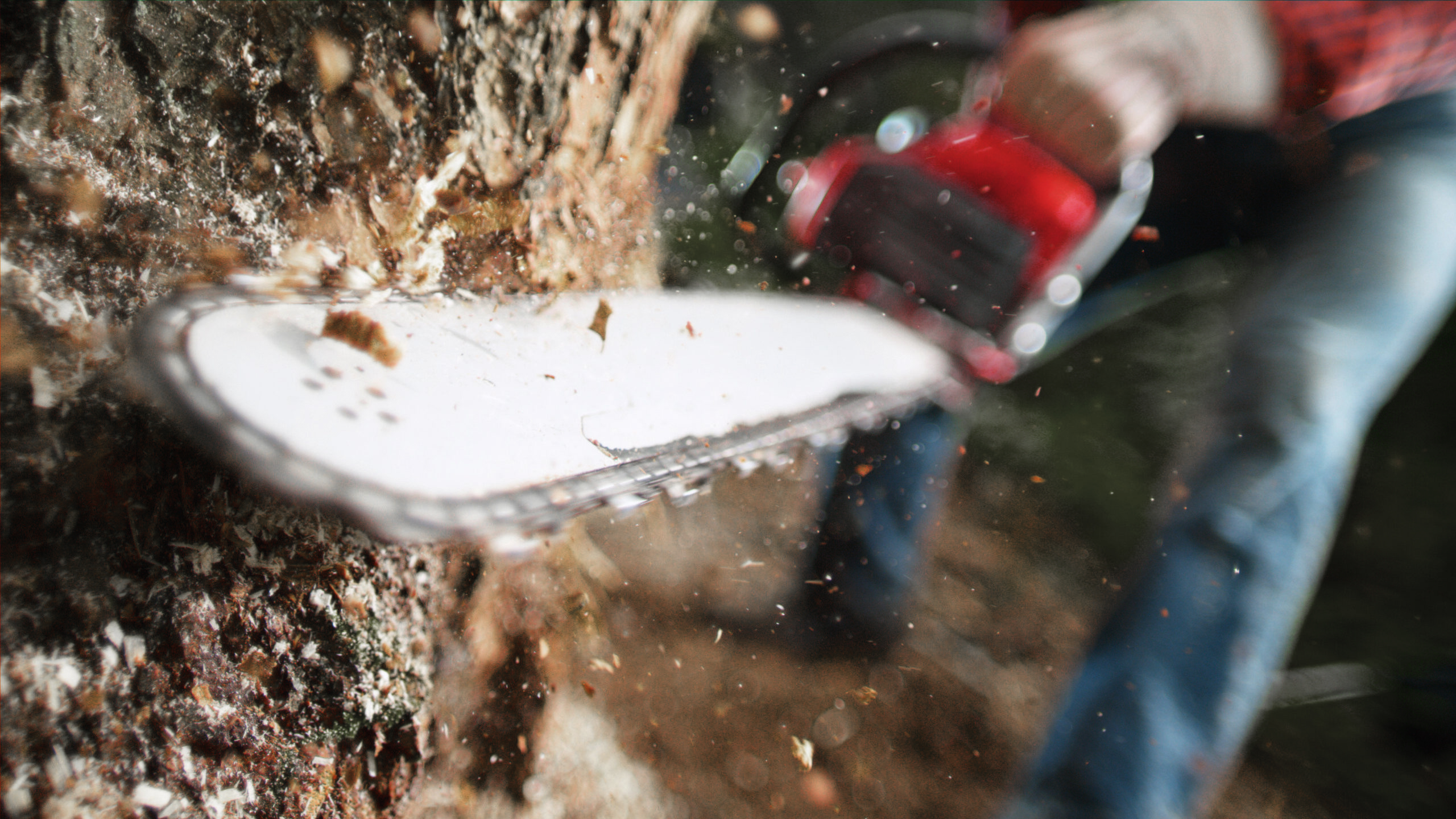A revolutionary impact
Believe it or not, the first chainsaw was a bone-cutting device, invented to assist doctors in surgical procedures. Luckily, technological advances mean that the tool is no longer required for human operations. Another role, however, would soon be found for the chainsaw.
When the modern chainsaw was first introduced in the 1920s, it utterly transformed forestry. This is the case because before the 1920s, woodcutters were reliant on rudimentary tools such as the axe and the saw, with work being slow and arduous. Indeed, the chainsaw is one of the many inventions made possible by the ignition combustion engine, which is why it is a tool of particular importance to NGK SPARK PLUG.
The role of a chainsaw’s spark plug
As part of its ‘gardening’ business area, the company supplies spark plugs, caps and glow plugs for a wide range of small engines and motors used in equipment such as lawnmowers, generators, trimmers and of course chainsaws. Just like in any other petrol-powered engine, the spark plug plays an essential role. Its main function is to ignite the air-fuel mixture.
For optimum ignition performance, it is important that a chainsaw’s spark plug is not carbon fouled, corroded, worn, or damaged in some other way, as this will lead to the engine failing to start, or poor performance. The experts recommend inspecting a spark plug after 10 to 15 hours of use. When a chainsaw’s engine is running smoothly, the spark plug’s ground electrode will most likely be covered in brown-coloured deposits. In this case, the engine is in fine fettle and the spark plug can be reinstalled.
Things to look out for, however, which indicate that something is wrong with the engine or the spark plug, include the presence of black deposits, corroded electrodes, a wide spark gap or a cracked ceramic insulator. Black deposits are a tell-tale sign that the air-fuel mixture is too rich in petrol, whereas corroded electrodes or a wide electrode gap suggest that the air-fuel mixture is too rich in oxygen. A cracked ceramic insulator, on the other hand, can be caused by a variety of factors which include an overly rich air-fuel mixture, the use of a spark plug with the incorrect heat range or over tightening during installation. In all of the above cases, the spark plug needs to be replaced
The correct chainsaw maintenance
With chainsaws, proper maintenance is of utmost importance. The following steps include some of the most important measures to take, in order to get the most out of a chainsaw.
- Fuel and storage: Before putting a chainsaw into storage, it is very important to drain both the oil and the petrol present in the engine. Petrol left idle in an engine, for example, can break down over time and form a thick, viscous substance. This, in turn, can block the engine, leading to hard starts and poor performance. Another important thing to do is to avoid using petrol with ethanol because ethanol burns hotter than petrol. This can result in the engine overheating, which can negatively impact the plastic and rubber present in the chainsaw. It is recommended to consult the user’s manual to identify the correct fuel for a chainsaw.
- Chain lubrication: The majority of chainsaws are designed to be re-oiled and refuelled at the same time, so it is recommended to check the oil level and top up as required when refuelling. In addition, a well-oiled chain keeps the saw from wearing out faster, makes cutting easier and reduces friction, so it is highly advisable to use bar and chain oil regularly.
- Chain sharpness: In order to perform well, a chainsaw’s chain must be sharp. The chain, however, can quickly become blunt if it comes into contact with soil, metal, or stones. When blunt, chainsaws tend to produce powdery sawdust, instead of longer, clean shavings, while more force is needed to be exerted by the woodcutter during operation. Another indication of a blunt chain is an increase in the levels of vibrations of the saw.

